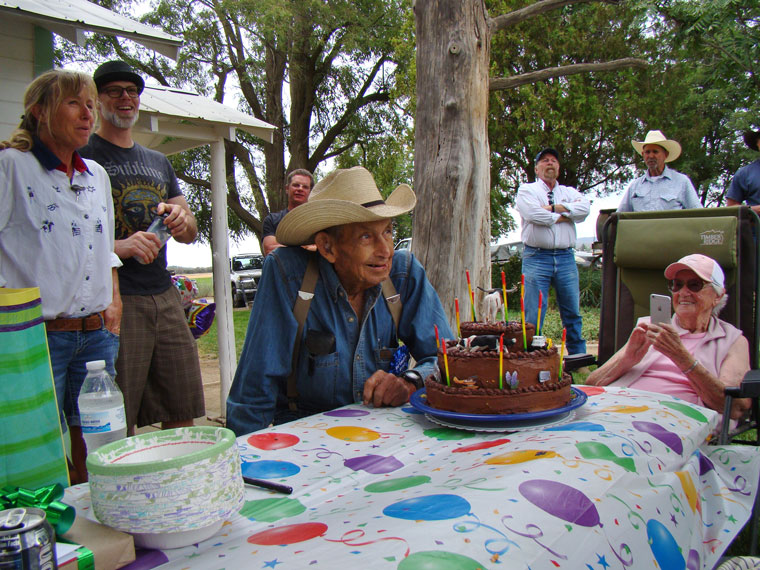
Photo courtesy Twila Wellman
On Monday, July 31, James Frances Wellman Jr., “Bud,” as he was always known, died surrounded by loved ones. He was 95. With his passing, some of the early history of these mountains passes with him but will be remembered by friends and family and enshrined in history books.
“He was raised to be a man from a very young age,” recalled his daughter Twila. “He rode a horse and worked cattle at an age younger than most kids enter school. Although raised to be hard during hard times, what I most remember was how he broke this cycle of hardness and became this amazing loving person. Most people, if you lived on this mountain, have seen on many 
Photo courtesy Twila Wellman
occasions his truck alongside the road with another vehicle, or several vehicles, having a gab session. He was super friendly with everyone, giving a nod, a wave or a ‘how ya do’in’ to everyone in his path.”

Photo courtesy Twila Wellman
In the late 1800s, Anza and Garner valleys were hard scrabbled, rough and tumble places, without electricity, without paved roads from the desert, Hemet or San Jacinto, and with luck-of-the-draw well water. Settlers scraped out livings as dry farmers and cattle ranchers. In fact, cattle were the main business of the mountains. In 2012, Riverside County historian Elmer Holmes wrote that it was the leading industry of the mountains and played “no small part in the wealth of the county.”
Early settlers, the Arnaiz, Wellman, Bahman, Parks, Contreras, Tripp, Scherman and Hamilton families, often found mates within the small family connected community.
Disputes over land boundaries and other matters were generally settled amicably among the settlers. Occasionally, guns entered the picture, as one did in early Wellman history.
In 1897, Frank Wellman, then 39, married Clara Arnaiz, 13. They were one of the earliest families in the area. They had two children — Mary born in 1898 and Jim in 1901.
Known for his hard drinking and hot temper, an angry and drunken Wellman assaulted his wife in 1901. Fearing for her life and those of her two young children, Clara shot and killed her husband. She was exonerated by a jury. Widowed at 17, Clara later married Joe Hamilton. Together, they had four children and raised the two Wellman children, Mary and Jim.
Jim became a successful and respected cattleman, guide and big-game hunter. From 1931 to 1939, he served as area justice of the peace, mediating disputes and conducting marriage ceremonies among the early families whose names abound in area roads and valley locations.
Bud, born in 1921 to Jim and Elma Hall Wellman, was part of a can-do generation who lived through the Great Depression and World War II in a part of California relatively untouched by the conveniences of urban life. The pioneering spirits and ethical codes of these early settlers, living out their lives with hard work and integrity, are something rare in today’s developed and interconnected world.
Bud was a World War II Navy veteran serving in the submarine service during the war. Before military service and returning to the family business of ranching and farming in Anza Valley, Wellman mined for gold in Alaska and was a heavy-equipment operator.
He celebrated his 95th birthday with friends and family in Anza with friends last year. With his death on July 31, another member of the first families of Anza passes into history. A memorial was held on Saturday, Aug. 19, at the Hamilton Museum. Family, friends, the Southern California Patriot Guard Riders and the Hemet American Legion Post Color Guard attended to pay tribute to Bud, to honor his integrity, his history and his service to his country.
For more about the Wellmans and other early Hill settlers, read “Looking Back, Anza and Garner Valley” by Margaret Wellman Jaenke, and “The San Jacintos” by John W. Robinson and Bruce D. Risher.










